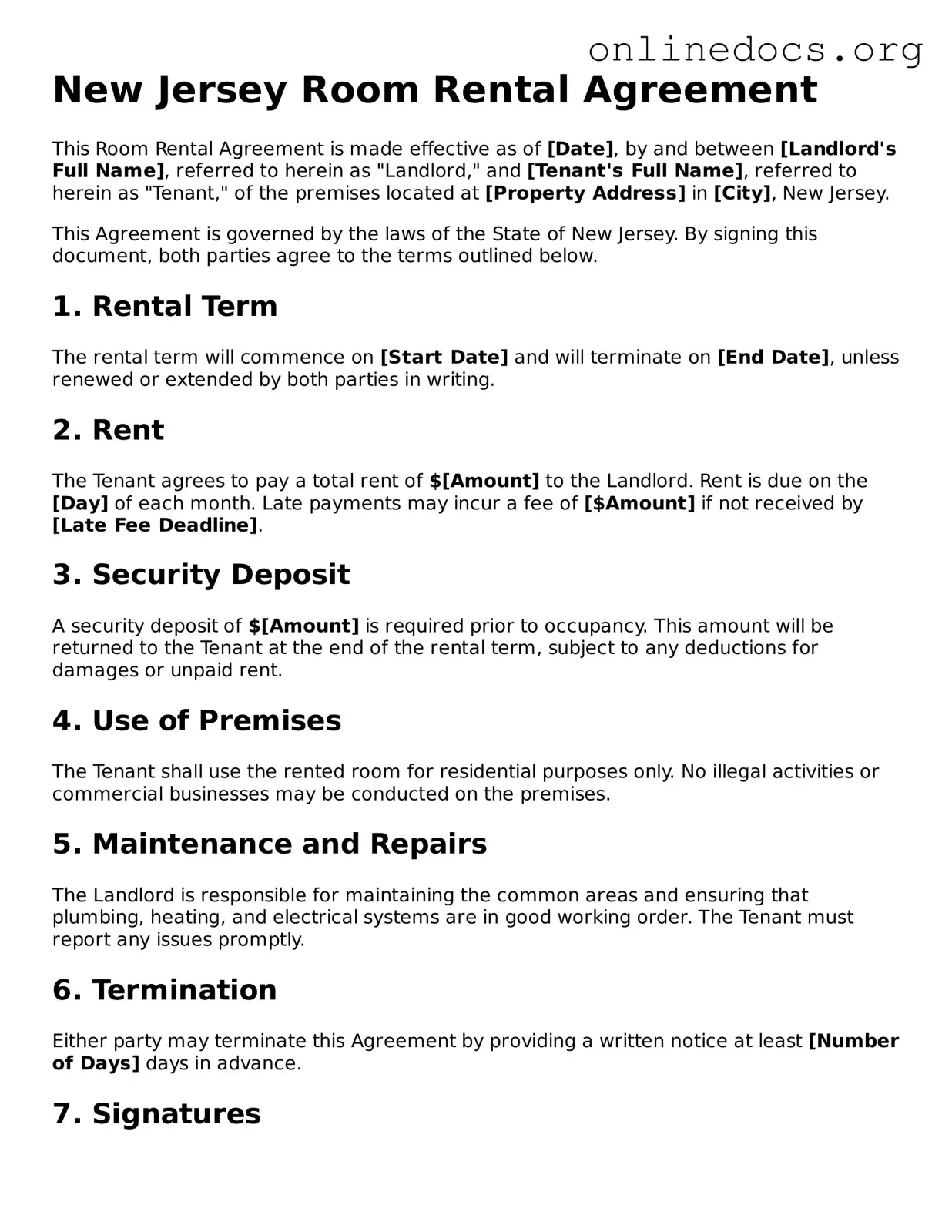The New Jersey Room Rental Agreement is quite similar to a standard Lease Agreement. Both documents outline the terms under which a property is rented, including the duration of the rental, payment details, and responsibilities of both the landlord and tenant. While a Lease Agreement typically covers an entire property, the Room Rental Agreement focuses specifically on renting a room within a property, often shared with other tenants. This distinction allows for flexibility in living arrangements and is particularly useful for those seeking short-term or shared housing options.
Another document that mirrors the Room Rental Agreement is the Sublease Agreement. This agreement comes into play when a tenant wants to rent out their leased property to another individual. Like the Room Rental Agreement, it details the terms of the rental arrangement, including rent amount and duration. However, the key difference lies in the original tenant's responsibility; in a sublease, the original tenant remains liable to the landlord, while in a room rental, the landlord directly manages the relationship with the room renter.
The Roommate Agreement also shares similarities with the Room Rental Agreement. While the former focuses on the relationship between roommates, outlining shared responsibilities and expectations, the latter formalizes the rental arrangement itself. Both documents aim to prevent misunderstandings and conflicts among parties living in the same space. They help establish clear guidelines on rent payments, utilities, and common areas, fostering a harmonious living environment.
A Co-Living Agreement is another document that aligns closely with the Room Rental Agreement. This type of agreement is often used in co-living spaces where multiple individuals share a home. Like the Room Rental Agreement, it sets forth the terms of occupancy, including rent, utilities, and shared responsibilities. The co-living context may include additional considerations, such as communal rules and maintenance responsibilities, reflecting the collaborative nature of the living arrangement.
For those seeking a structured method to enhance their application process, the informative Recommendation Letter form provides an effective way to gather crucial feedback or support regarding an individual's qualifications and character.
Lastly, the Rental Application is a document that, while serving a different purpose, complements the Room Rental Agreement. The application is typically filled out by prospective tenants to provide information to landlords. It includes details such as employment history, references, and rental history. While the Room Rental Agreement formalizes the rental terms, the application helps landlords assess potential tenants, ensuring a good match for the living situation.
